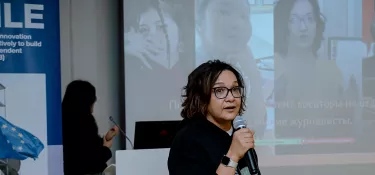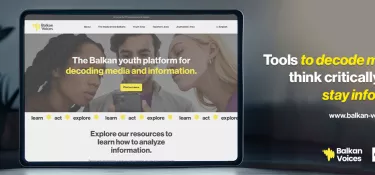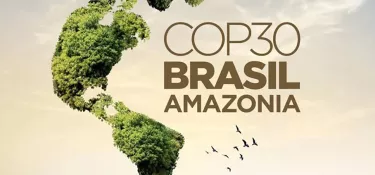
Best practices for digital communication - Facebook : how to use it
Founded in 2004, Facebook is an online social network that is part of the Meta Platforms Inc. Group.
It allows users and brands to publish content, interact with other users, join groups of subject-based communities in which users discuss a range of varied topics or even to follow pages, which are in effect spaces where brands, organisations and influencers can assert their presence and position. It is by far the most versatile social network, claiming no fewer than 2.9 billion active users in 2021, which makes it the most visited and most powerful social network in the world. It is also the third-most downloaded app on smartphones worldwide. This all means that, more than any other social network, using Facebook in your communications is key to asserting your presence on social media.
Why use Facebook?
As mentioned above, Facebook is the most visited social network in the world, for the following reasons:
It’s one of the oldest social networks (2004), having ridden the world’s first digitalisation waves.
It’s a generalist social network, i.e., it can be used for several things at once (blogging, sharing photos and videos, online agenda, instant messaging, pages for brands and organisations, surveys, etc.)
It covers all age ranges, unlike the majority of other social networks. According to Statista.com, over 20% of its users are aged 45 and over.
It governs the entire Meta Group, which includes other popular and influential networks such as WhatsApp, Facebook Messenger, Instagram, etc.
It is the most interconnected with other social networks, allowing its users and brands to interact and publish content on a multi-channel communication platform thanks to the Meta Business Suite tool.
In summary, Facebook is the basis of all communication on social media, allowing organisations to assert a general presence on the Internet. So, the question should really be: why not use Facebook?
Creating a page, group or profile
To create your page, group or profile on Facebook, you must first start by creating an account :
1- Go to facebook.com and click Create new account.
2- Enter your name, email address or mobile phone number, password, date of birth and gender.
3- Click Sign Up.
4- To finish creating your account, you need to confirm your email address or mobile phone number.
To create a Business Page on a computer :
1- At the top of the home page, select Create and choose Page.
2- Name your Page.
3- Add a category to describe your Page. Enter business information.
4- Add a profile photo, then select Next to access your new Page.
To create a group :
1- Click in the top right of Facebook and select Group.
2- Enter your group name.
3- Select the privacy option.
4- Add people to your group.
5- Click Create.
6- Upload a cover photo and add a description.
Content types
There is a huge range of content that you can produce to run your page on social media. This can take the form of visual posts, high-quality videos, quotes, memes, quizzes, challenges, competitions, etc. You can also produce informative content, authentic content that is true to reality, as well as answers to problems facing Internet users through articles, infographics, educational videos, interviews, livestreams, stories, surveys, etc.
Scheduling and creating content
Create and schedule a post on Meta Business Suite mobile :
1- Tap the post creation tool.
2- Tap Post.
3- Create your post and tap Next.
4- You can post a text post, media (such as pictures or videos), links and more.
5- Choose whether you want to publish to Facebook, Instagram or both.
6- Review your post and select an option:
7- To schedule your post to publish later, tap Schedule for later and select the time and date that you want your post to go live.
8- To finish your post later, tap Save as draft.
Create and schedule a post on Meta Business Suite desktop :
1- Tap the post creation tool.
2- Make sure that you’re working in the correct account.
3- To select a different Facebook Page and Instagram account in Meta Business Suite, click the drop-down menu in the top left of your sidebar.
4- Click Creator Studio.
5- Select the Facebook Page and Instagram account that you want to create and schedule posts for.
6- Click the green Create post button. Add the content you want to share.
7- Click Post, Schedule or Save as draft. If you want to Schedule your post, add the date and time, then save.

Dissemination and promotion techniques
Dissemination and promotion techniques on social media are constantly changing. However, the times and places you choose to post your content can influence the continual improvement of your presence. Your Facebook posts therefore need to trigger conversations and interactions between users, which means you need to increase the number of messages that promote these exchanges. Ask broad questions to get as many responses as possible, address your community directly by replying to comments, fill in the description field for your posts clearly and precisely so that your target users want to follow you. Bring originality when you post your content, using your own high-quality videos. Constantly cultivate your positioning and vision to ensure you are seen by all as a credible and serious actor. Maintain contact with your fans by posting intermediate content, such as live streams, stories or Q&A sessions.
Your Facebook page needs to be regularly updated with varied content to gain followers. At the same time, you can promote your page free of charge. This will help you to develop your audience and the engagement of your community. Start by suggesting the page to your Facebook contacts. Announce the creation of your page on your other social networks, if you have any, and link them for maximum visibility. If you have a website, you can create a dedicated page to highlight your activities. Bring added value to your page by reaching out to your fans and adding quality content.
Lastly, to take things up a gear, you need to plan a budget to boost your posts, which will allow you to increase the number of fans, reactions and the rate of engagement on your page. When you click the Boost Post button, you need to set the budget, placement (Facebook, Instagram or Messenger), schedule (campaign duration) and audience targeted by your promotion (targeting). Don’t forget to analyse the results of your promotion to measure the real impact of your sponsorship.
Engagement and interactions
The number of fans and Likes on your Facebook page is one of the primary indicators enabling you to establish your position. The Likes tab provides you with an overview of the demographic data of your fans, the number of organic (unsponsored) and paid (sponsored) likes, the number of invitations sent to like your page and the change in number of fans by origin. Reach is the number of people having seen your content. As a visibility indicator, it enables you to see whether your post has reached many people or, conversely, whether it has not had sufficient visibility. For an overview of the reach of your posts, you simply need to check the Posts tab.
Interactions refer to all the people who have clicked on your post at least once. In particular, these allow you to see the number of Likes, comments, shares, clicks on the link, clicks on the photo, video views, mentions of a third person, comment likes, clicks on the page mentioned or even how many have reported your post. This data gives you an indication of the engagement of your fans for each of your posts. To calculate the engagement (or success) rate of one of your posts, use the following formula: (interactions/reach) x 100. By applying this calculation to all your posts, you will be able to compare the results of your posts and therefore improve your output by focusing on those that work best in future.
Page moderation
In order to guarantee that the content on your Facebook page is reliable and authentic, you must moderate your page. New functions have been developed to enable you to automatically reject posts spreading misinformation. By identifying spam as and when it occurs via the fact-checking network available to you, you can systematically block future undesirable posts. This represents a considerable time saving for the administrators of your page and an effective measure in tackling misinformation. And this function is not all, with others bringing numerous advantages and making it easier for you to manage your account. The Block function stops users you select from interacting on your page. Predefined criteria also enable you to automatically approve or reject requests to join your page.
There are also more traditional functions that allow you to :
- Prevent certain words from appearing in the comments on your Page (block up to 1000 keywords).
- Allow or prevent visitors from posting on your Page.
- Manage the comments that other visitors to your Page can see (hide or delete a comment).
- Prevent people from posting photos or videos on the timeline of your Facebook Page.
- Turn recommendations on or off for your Page.
- Turn messaging on or off for your Page.
- Pin a post to the top of your Facebook Page’s timeline.
Statistics and performance
The performance statistics of your Facebook page can help you to track the performance of your videos and assess how effective they are. To do this, Go to the Facebook section in Creator Studio.
1- Click Insights.
2- Click Performance.
3- Choose the Pages you want to see insights about. You can also filter insights by date.
Once you’ve selected your time frame, you will have access to the data below, broken down by tabs, enabling you to see the most relevant performance statistics :
- 1-minute video views : the number of times your videos were played for at least one minute.
- Minutes viewed : the total number of minutes that your videos were played including time spent replaying the video.
- 3-second video views : the number of times that your videos were played for at least three seconds or for nearly their total length if they are shorter than three seconds, within the selected time range.
- Engagement : the number of people who reacted to, commented on or shared one of your videos.
- Net followers : the number of new followers minus the number of unfollows during the defined period of time.
Practical advice
- Be active by publishing content regularly. Do not be absent for long periods of time or your engagement rate may suffer.
- Post relevant, attractive and quality content that will foster interaction among your community.
- Use photos, videos or GIFs as often as possible to ensure newsfeed visibility and attract the attention of your community.
- Use hashtags and tags to ensure visibility to as many users as possible who share your vision and your fields of interest. This will allow you to discover and attract people to your page.
- Communicate with your community through constant interaction. Reach out to your followers about current issues or questions, invite them to express their opinions and respond to their inbox messages and comments.
- Choose the right moment to publish your posts.
Discover the complete guide : Best Practices for digital communication


